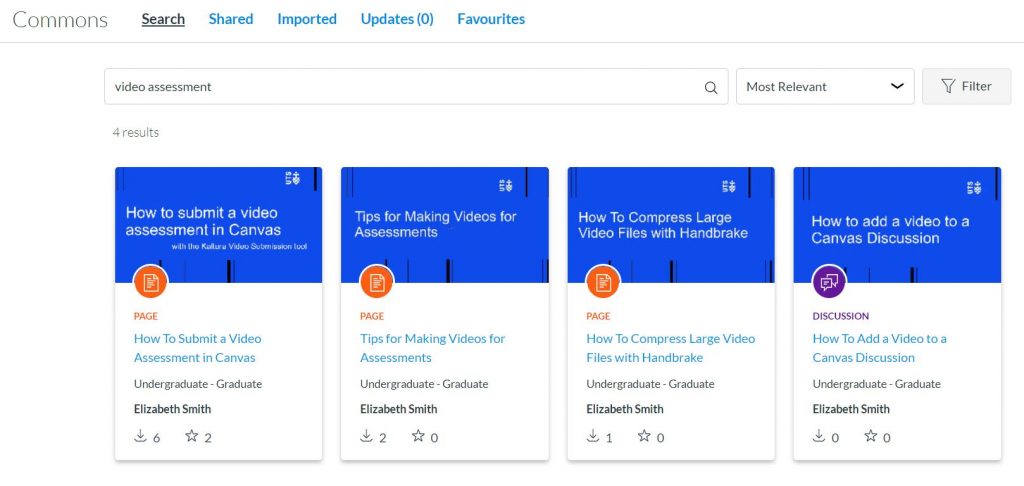Sometimes simple things are the most difficult to get right. So, when you ask students to submit a video for an assessment task, it can be the simple questions that are the most difficult or time-consuming to answer. Like, ‘how do I submit my video?’ or ‘how do I make this video on my phone?’.
The LX.lab* have created a set of instructional guides that help answer these kinds of questions for you. Available in Canvas Commons, you can simply import them into your Canvas site and tweak them to suit your subject’s needs.
Video assessment instructions you can import into your Canvas site

- How To Submit a Video Assessment in Canvas
Shows students how to use Kaltura to submit a pre-recorded video to be marked in Speedgrader. - How To Add a Video to a Canvas Discussion
Shows students how to use Kaltura to embed a pre-recorded video in a Discussion reply. - How To Compress Large Video Files with Handbrake
Shows students how to download and use Handbrake, a piece of software that compresses large video files for easier upload. - Tips for Making Videos for Assessments
A guide for beginners with tips for presenting on camera, improving sound and video quality, and editing recordings.
These are basic instructional guides – you should edit and add to them once they’re imported into your Canvas site.
How to import these into your Canvas site
- In Canvas, select ‘Commons’ from the global navigation menu.
- In the Commons search bar, search for “video assessment”.
- Click on the titles in the results to see a preview of each resource.
Note: Embeddable items, like Kaltura videos or H5P activities, do not display in the Canvas Commons preview. You’ll need to import the resource into your site to view the embedded items. - To import and view the resource in your own Canvas site, follow the instructions here.
- Once the resource is imported to your own site, don’t forget to add it to an existing Module so students can see it. Go to your Modules area, click the + button on the Module you need, choose the type of resource you’re adding to the Module (e.g., Page, Discussion), then select the resource title from your list of existing resources.
If you would like help with the import process or adapting these resources to suit your subject, contact the LX.lab for a consultation with one of our learning designers.
*With thanks to Amanda White for some of the videos used in the resources.
